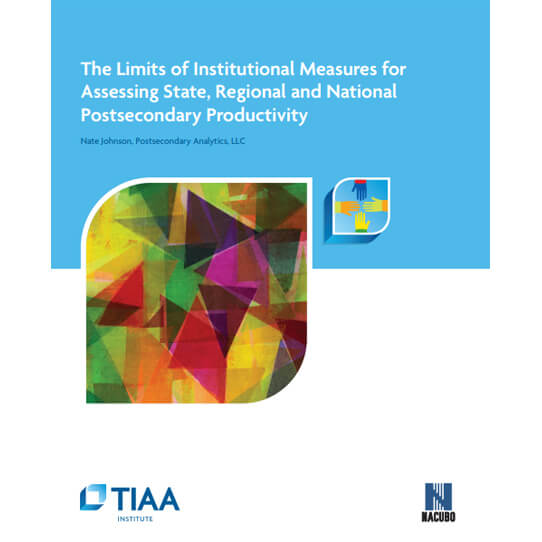In a paper published by TIAA Institute and NACUBO as part of a series examining higher education productivity, Nate Johnson argues that much of higher education’s output is a function of its systemic structure and composition, rather than simply the sum of its institutional parts. Historically, gains in total outputs have happened both by adding new institutions and by growing existing ones, while some of the biggest gains in efficiency (or its conceptual cousin, productivity) have come from the addition of new types of institutions that have had different objectives and missions than their pre-existing competitors.
A focus on systemic productivity requires a population-based approach to measurement, which makes students and potential students in a given metropolitan area, state or nation the target of analysis, rather than a particular set of institutions. And when students are the focus, their own contribution to higher education outputs, in the form of time devoted to postsecondary study, becomes a critical input in productivity measurement.
The paper is available here as well as on the TIAA Institute website.

